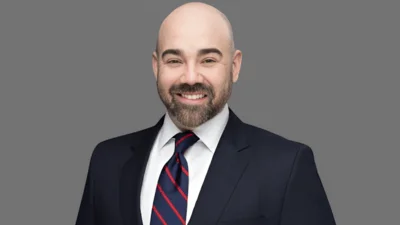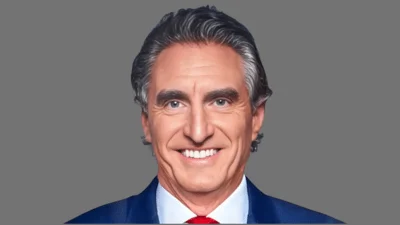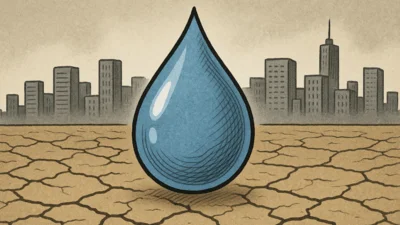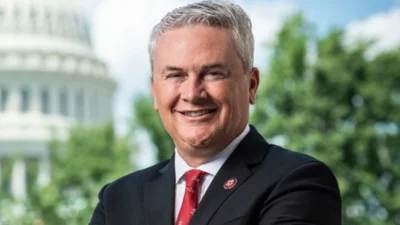Mr. President, everyone in this body knows that small businesses are an extremely important dynamic part of the U.S. economy. I like to say that small business is the engine that drives the U.S.
economy. President Obama agrees that small businesses have generated 70% of net new jobs over the past decade. Three weeks ago we debated the budget resolution on the Senate floor. During the debate,
the Senate spoke on this point. Senator Cornyn’s small business tax relief amendment passed by an overwhelming vote of 82 to 16.
America’s small businesses have been suffering during this recession. If you go back to your states frequently, like I do, you’ll hear about it directly. A few weeks ago, Senators Landrieu and Snowe held a hearing on the crunch hitting small business. They found that big banks have been cranking down lending to small businesses. I have been trying to get answers out of the Treasury on whether banks receiving the bailout money have been similarly squeezing out small business customers. I’m still waiting for answers from the Treasury.
A very good source of answers about the environment of small business is found in the monthly survey of small business. This survey is published by the National Federation of Independent Business
(“NFIB"). NFIB is the largest small business organization. NFIB has been conducting these surveys for
35 years.
NFIB’s membership includes hundreds of thousands of small businesses all across America.
You can find the survey on NFIB’s website at www.NFIB.org. I’d encourage every member to check out this month’s survey.
The survey shows some extremely disturbing trends. On credit availability, small businesses are getting squeezed very hard. I have a chart that shows the trend. As you can see, the chart shows that the availability of loans has fallen off a cliff since late 2007.
This credit crunch and other factors have contributed to a near-record low in NFIB’s index of small business optimism. I have another chart that puts this data in perspective. This chart shows the small business owners turning extremely pessimistic in the last couple of years. What you see here is the attitude of the decision-makers in small business America. Those are the decision-makers for businesses that President Obama and Congress agree are the businesses most likely to grow or contract jobs. The pessimism is at its second lowest point in the 35 years of the survey. This data should concern every policy maker in this town.
As bad as the two sets of data are, it gets worse. Here’s another chart. This chart shows the net increase or decrease in small business hiring plans. The survey asks the small business owner whether he or she plans to expand or contract employment over the next three months. As you can see, even more dramatically than the other two charts, this chart shows small business activity contracting tremendously. Small business hiring plans are at their most negative level in the 35-year history of the survey. Let me repeat that. Since 1974, when NFIB started doing these surveys, the likelihood of small business owners adding workers has never been worse.
With this pessimistic environment, we should not be surprised that job losses for small businesses have been growing dramatically. A national employment report recently released by Automatic Data Processing shows that 742,000 non-farm private sector jobs were lost from February to March 2009. Of those 742,000 lost jobs, 614,000, or 83 percent, were from small businesses.
The President’s recent efforts to increase lending to the small business sector are commendable.
The center piece of his small business plan will allow the federal government to spend up to $25 billion to purchase the small-business loans that are now hindering community banks and lenders.
Unfortunately, that’s a drop in a very empty bucket. Remember that small business accounts for about half of the private sector. Moreover, the positives that will come to small businesses from this relatively small package of loans-which will ultimately have to be paid back-will be heavily outweighed by the negative impact of the President’s proposed tax increases. Helping small businesses get loans just to take that money back in the form of tax hikes is not wise.
The President’s Budget proposes to raise the top two marginal rates from 33% and 35% to 40%
and 41% respectively, when PEP and Pease are fully reinstated. President Obama’s marginal rate increase would mean an approximately 20% marginal tax rate increase on small business owners in the top two brackets.
Many of my friends on the other side will say that while they agree that successful small businesses are vital to the success of the U.S. economy, the marginal tax increases for the top two brackets will not have a significant negative impact on small businesses.
Proponents of these tax increases seek to minimize their impact by referring to Tax Policy Center data that indicate about 2 percent of small business filers pay taxes in the top two brackets. In testimony before the Senate Finance Committee, the liberal think tank, Center on Budget Policy and Priorities, also used that figure. Moreover, Secretary Geithner has testified that this Treasury Department agrees with that figure. They argue that a minimal amount of small business activity is affected.
However, there are two faulty assumptions to this small business filer argument.
The first faulty assumption is that the percentage of small business filers is static. In fact, small businesses move in and out of gain and loss status depending on the nature of the business and business cycle. The non-partisan Joint Committee on Taxation has indicated that, for 2011, approximately 3 percent of small business filers will be hit by these proposed higher rates. These statistics compare to a
2007 treasury analysis which showed 7% of flow-through business owners paying the top rate. In the latest analysis, when the impact of the alternative minimum tax (“AMT") is fully included, that percentage may drop some.
The second faulty assumption is that the level of small business activity, including employment,
is proportionate to the filer percentage.
According to NFIB survey data, 50% of owners of small businesses that employ 20-249 workers would fall in the top two brackets. You can see it right here on this chart. According to the Small Business Administration, about two-thirds of the nation’s small business workers are employed by small businesses with 20-500 employees.
Do we really want to raise taxes on these small businesses that create new jobs and employ twothirds of all small business workers? With these small businesses already suffering from the credit crunch, do we really think it’s wise to hit them with the double-whammy of a 20 percent increase in their marginal tax rates?
Newly developed data from the Joint Committee on Taxation demonstrates that 55% of the tax from the higher rates will be borne by small business owners with income over $250,000. This is a conservative number, because it doesn't include flow-through business owners making between
$200,000 and $250,000 that will also be hit with the budget's proposed tax hikes.
If the proponents of the marginal rate increase on small business owners agree that a 20% tax increase for half of the small businesses that employ two-thirds of all small business workers is not wise,
then they should either oppose these tax increases, or present data that show a different result.
As we prepare for the conference on the budget resolution, the President and the Congressional Democratic Leadership have an opportunity to change course. They have an opportunity to revisit the tax heavy, spending heavy, and debt heavy budget they’ve passed in each body. Both budgets would perpetuate the double whammy of constricted credit and high taxes directed at America’s job engine -
small business.
In the coming days, we Republicans will try to persuade our Democratic friends who have all the controls of fiscal policy to change course. One way they can change course is to focus, like a laser beam, on jump-starting the nation’s job engine - small business America. We need an upturn in the small business optimism index. We need to reverse the direction of this sharply downward sloping arrow. If we ignore this negative environment, we’re just kidding ourselves. We need to change course and reverse this even more sharply downward sloping hiring plan arrow. That’s where the President and Congress agree we need to get more job growth. As we take the final steps on the budget, let’s match that budget with this reality. I yield the floor.









